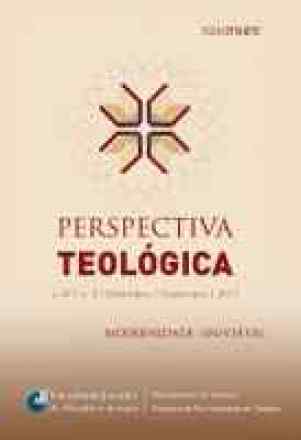A TEOGASTRONOMIA: UMA ESTÉTICA TEOLÓGICA SUI GENERIS
Perspectiva Teológica
A TEOGASTRONOMIA: UMA ESTÉTICA TEOLÓGICA SUI GENERIS
Autor Correspondente: Francys Silvestrini Adão | [email protected]
Palavras-chave: Teogastronomia. Sabedoria. Estética Teológica. Mistério Pascal
Resumos Cadastrados
Resumo Português:
Neste artigo, o A. apresenta uma nova abordagem teológica, denominada “teogastronomia”. Esta estética teológica defende que a relação que uma pessoa, um povo e uma civilização estabelecem com sua “gastronomia” – no sentido etimológico do termo – tem um valor teofânico e é detentora de uma discreta fecundidade pastoral e teórica. Para demonstrar esta hipótese, o artigo procede em três momentos. Em primeiro lugar, reflete sobre o conceito de teogastronomia, bem como sobre a relação entre esta abordagem e o saber religioso da revelação bíblica. Em seguida, situa esta estética teológica em seu “berço” literário e espiritual próprio, a saber, os escritos sapienciais. Por fi m, mostra como este ramo sapiencial da teologia pode levar-nos a revisitar, em profundidade, o núcleo vivo da fé cristã: o mistério pascal de Jesus Cristo, expressão definitiva de sua livre decisão de dar a própria vida como alimento pela multidão incontável de homens e mulheres em busca de vida em plenitude.
Resumo Inglês:
This article presents a new theological approach, called “theogastronomy”. This theological aesthetic argues that the relationship that a person, a people and a civilization establish with their “gastronomy” – in the etymological sense of the term – has a theophanic value and holds a discreet pastoral and theoretical fecundity. To demonstrate this hypothesis, the present article proceeds in three stages. First, it reflects on the concept of theogastronomy, as well as on the relationship between this approach and the religious knowledge of the biblical Revelation. Then, it places this theological aesthetic in its own literary and spiritual “cradle”, namely, the sapiential writings. Finally, it shows how this sapiential branch of theology can lead us to revisit, in depth, the living core of the Christian faith: the paschal mystery of Jesus Christ, the definitive expression of his free choice to give his life as food for the countless multitude of men and women seeking life in its fullness.

